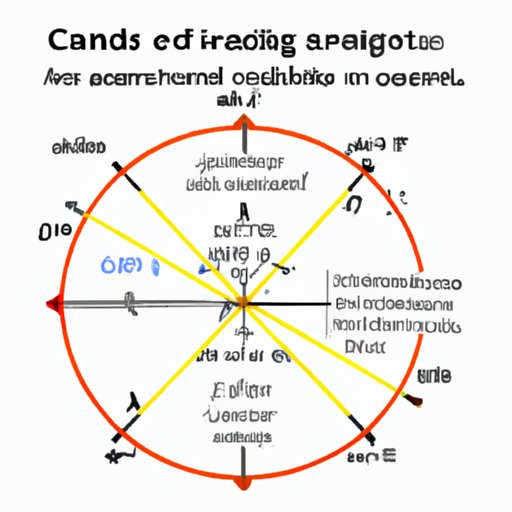
I. Introduction
Converting degrees to radians is a fundamental skill that anyone working with angles needs to know. It’s especially important in fields like geometry and construction, where precise measurements and calculations are critical. If you’re not already confident with the conversion process, don’t worry – this article will guide you through it step by step, with examples and real-world applications.
II. Step-by-step guide
First, let’s start with the basics. Radians are a unit of measurement for angles, just like degrees. However, radians are based on the radius of a circle, rather than dividing a circle into 360 equal parts (which is what degrees do). Specifically, one radian is the angle that subtends an arc of length equal to the radius of the circle.
To convert degrees to radians, we need to use a simple formula that relates the two units of measurement. Here’s how:
- Multiply the degree measure by pi (π)
- Divide the result by 180
That’s it! The formula looks like this:
radians = degrees × (π/180)
Let’s look at an example to make it clearer. If we want to convert an angle of 45 degrees to radians, we would use the formula like this:
radians = 45 × (π/180) = 0.7854 radians
So, 45 degrees is equivalent to π/4 radians (since π/4 is approximately equal to 0.7854).
III. Real-world examples
Now that we know how to convert degrees to radians, let’s explore some real-world applications of this concept:
Geometry
In geometry, angles are often measured in radians because they are a more natural unit of measurement for circular arcs and sectors. For example, to calculate the length of an arc of a circle with radius r and central angle θ, we use the formula:
arc length = θr
If the angle is given in radians, we can plug it directly into the formula. But if the angle is given in degrees, we need to convert it to radians first. Here’s an example:
Suppose we have a circle with radius 5 cm, and we want to find the length of an arc that subtends an angle of 60 degrees. First, we convert the angle to radians:
radians = 60 × (π/180) = π/3 radians
Then, we plug it into the formula:
arc length = π/3 × 5 = 5π/3 cm
So the length of the arc is approximately 5.24 cm.
Construction
In construction, angles are often measured in degrees or radians depending on the context. For example, if you are building a roof with a pitch of 30 degrees (i.e., the angle between the roof and the horizontal), you may need to convert it to radians to determine the correct angle setting on your saw or protractor.
Here’s an example:
Suppose we want to cut a piece of wood at an angle of 45 degrees to make a picture frame. We can use the formula to convert it to radians:
radians = 45 × (π/180) = 0.7854 radians
Then, we set our saw or protractor to 0.7854 radians and make the cut.
IV. Video tutorial
If you’re a visual learner, you may find it helpful to watch a video tutorial that demonstrates the conversion process step by step. Here’s a great one:
As you can see, the instructor uses animations and graphics to explain the concept in a simple, clear way. The video is also a great resource to review the steps or refresh your memory.
V. Infographic
If you prefer a visual representation of the conversion process, check out this infographic:

The infographic uses illustrations and graphics to explain the concept in a simple, easy-to-understand way. It also highlights key steps and common misconceptions.
VI. Q&A format
Here are some common questions and misconceptions related to converting degrees to radians:
Q: What’s the purpose of using radians instead of degrees?
A: Radians are a more natural unit of measurement for angles in certain applications, such as calculus and physics. In addition, many trigonometric functions (like sine and cosine) are defined in terms of radians.
Q: Is there an easier way to do this conversion?
A: While the formula we’ve presented is the most common method for converting degrees to radians, there are a few other shortcuts you could use. For example, you could memorize the values of common angles (like 30, 45, and 60 degrees) in radians and use them when needed. Alternatively, you could use a calculator or online tool to do the conversion for you.
However, we recommend learning the formula and understanding how it works, as it will help you better grasp the concept and apply it in different situations.
VII. Conclusion
Converting degrees to radians is a fundamental concept that anyone working with angles should master. By following the step-by-step guide, checking out the real-world examples, watching the video tutorial, reviewing the infographic, and reading the Q&A section, you should be well on your way to understanding the concept better.
Remember, practice makes perfect – so try out some problems on your own to reinforce your understanding.




